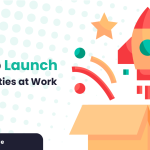
This blog was co-authored with Vistuositeam
In the wake of massive layoffs at high-profile companies such as Meta (11,000), Twitter (3,700), and Tesla (10%), one might be tempted to dismiss the significance of the still-ongoing wave of voluntary employee turnover that continues to touch every sector of the economy.
A 2020 McKinsey survey found that 40% of employees globally were considering leaving their jobs in the near future, and research by Gartner indicates that voluntary attrition could reach up to +20% of the pre-pandemic average. This historic rate of attrition poses an existential threat to employers who are finding themselves stripped of their strategic agency in choosing who to let go and when, which teams/business units to restructure, etc.
Quitting workers have been vocal about what’s driving them away: the desire for higher pay, more respect and recognition, greater opportunities for growth, and better work-life balance, among other things. And in all fairness, many employers have responded, providing workers with more flexibility than ever before in choosing how and where to work, offering broader mental health support, and investing heavily in DEI and recognition initiatives. And yet, their employees are still leaving.
Why?
Because moving just one or two organizational levers is insufficient to address the range of concerns that contribute to worker dissatisfaction. To create an organization that people don’t want to leave, employers must offer a value proposition that is unique to their company and resonates with their employees. Money, perks, and other, similar incentives are easily reproducible by anyone. Hence, focusing on such traditional incentives often results in an escalation game that plunges employers into a bidding war with each other. In such a system, the “highest bidder” wins the prize until another “higher bidder” comes around to snatch it for themselves. The prize (the employee) then follows the tides of the “greater bidder,” moving from organization to organization, and contributing to the inflated rate of attrition we mentioned at the beginning of this article.
So to create something that is impossible for competitors to replicate and employees find hard to lose, employers should try promoting the formation of authentic human connections. Decades of research and evidence gleaned from human history point to community as the foundation of meaningful relationships between individuals, and as a powerful vector of cooperation and culture creation at scale. In that vein, the creation of communities at work imposes itself as a very attractive solution to solve issues of retention and make organizations more resilient to change.
If you want to forge enduring, reciprocally satisfying connections between your employees and your organization, it helps to understand the subterranean factors that influence human behaviour within groups.
All humans experience four life contexts - the environments and surroundings that govern our lives. They include:
- Self: your individual thoughts, background, feelings, perceptions, and all the things that create your beliefs.
- Social: the presence of other humans, and your interactions with them.
- Systems: written or unwritten permissions, rules, policies, norms, and organizational structures.
- Spaces: the physical and virtual spaces in which you live, work, and play. You are wherever you go!
Within each of these life contexts are push and pull forces that influence our thoughts and behaviors. These are the power to:
- Grow Capability: the ability to do something successfully, and the confidence to act on your own capacities and judgements.
- Inspire Motivation: what compels you to act.
- Overcome Barriers: getting past static impediments to change.
- Resist Temptation: surpassing the pressures and forces that tempt you to return to the old ways of behavior.
These powers and contexts are at play whether you’re trying to implement sustainable practices, retain top talent, or transform your team from functional to exceptional.
Remote Working in Four Contexts
Remote working was essential to keep employees working at the worst points of the pandemic. But as the job market slows down and inflation picks up, an unintended consequence of flexible working has been revealed: the increased vulnerability of remote workers once companies need to downsize. This reality is not tied to employee performance, but rather to the strength of interpersonal relationships between decision-makers and employees. In other words, a somewhat sub-optimal approach to downsizing your company.
A short journey through the four contexts provides insight into how both employer and employee can improve mutual connection, team function, and trust.
The social context serves as a powerful source for change when teams lack cohesion or find themselves in silos. Good moods and bad moods, politeness and rudeness, good faith and bad faith, curiosity, and resignation spread rapidly through our social networks. But it’s here that we also learn vicariously, share willpower, enable cooperation, and share stories. In essence, we learn to look outside of ourselves.
In the workplace, the systems context lends credence and order. Leaders must provide the means for employees to connect, give explicit permission to participate, and provide consistent messaging. Expecting employees to deepen their connections with each other and with the organization without providing the structure to do so could damage employee trust.
As social media has proven, you don’t need to be in a room with someone to be influenced by them. The spaces context includes physical spaces and virtual spaces. Employers must make adaptations to ensure that remote and in-office workers have similar experiences of the organization, no matter where they work. For example, designing performance spaces in the office could include the use of color, or proximity of resources. Replicating this in the virtual space may include guidance on how to ensure an individual’s home office isn’t a barrier to productivity, or to the aforementioned social context.
And within the self context, employers can help individuals find intrinsic motivation, support autonomy, and identify what is limiting them from connecting with their team. Sometimes, remote workers are perceived as having more autonomy than in-officer workers. To address this, employers have made the mistake of filling calendars with meetings, which only reduces this quintessential sense of autonomy.
Conclusion
The current state of the economy and labor market is forcing employers to find new ways of creating stickiness with their employees. The traditional means of nurturing employee loyalty are falling short as employee expectations have changed and ever-tightening market constraints have challenged the efficacy and economic viability of most of these initiatives. Employers have no choice but to sit down and ask themselves about the core drivers and needs of their employees if they are to stabilize their workforce.
The four life contexts provide a multi-dimensional perspective on what employees need to be at their best individually and as a group. For employers to truly make a change and get ahead, they will have to consider their retention strategy through these lenses as well. Thankfully, arguably the most potent initiative available to them is also as old as humanity itself: community.
Companies that can effectively create employee communities to boost social connectivity and address all four life contexts will acquire a decisive competitive advantage over their competitors and come out of these challenging times stronger than ever before.
Sources
https://www.cnbc.com/2022/11/09/tech-layoffs-2022.html
https://www.mckinsey.com/capabilities/people-and-organizational-performance/our-insights/the-great-attrition-is-making-hiring-harder-are-you-searching-the-right-talent-pools?stcr=BA9E07F88B58440CA852479B68C7D145&cid=other-eml-alt-mip-mck&hlkid=6dc9c39157a549738fe86850eb72bd36&hctky=13315742&hdpid=a20583c7-6cd9-4f76-aa3c-adbed6fc7a04
https://www.gartner.com/en/newsroom/04-28-2022-gartner-says-us-total-annual-employee-turnover-will-likely-jump-by-nearly-twenty-percent-from-the-prepandemic-annual-average#:~:text=U.S.%20employee%20annual%20voluntary%20turnover,%2C%20according%20to%20Gartner%2C%20Inc.
https://hbr.org/2022/03/dear-manager-youre-holding-too-many-meetings
BRATLAB Four Powers Model: http://bratlab.com/four-powers







